Zhipeng Jiang
De-identification of medical records using conditional random fields and long short-term memory networks
Sep 29, 2017
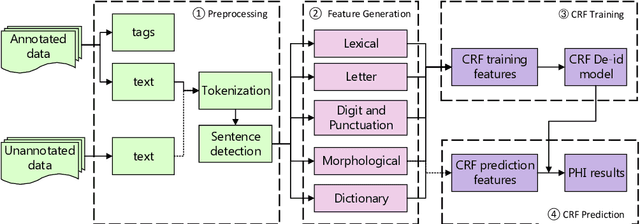
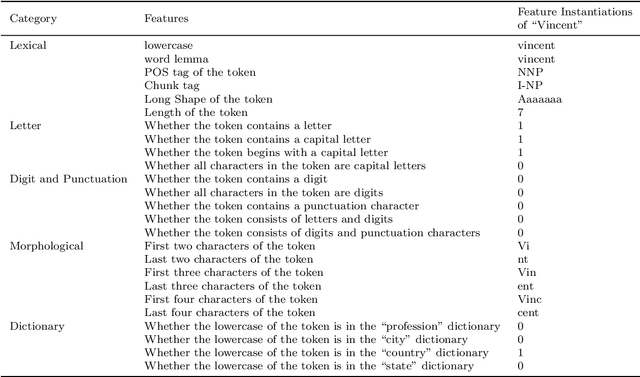
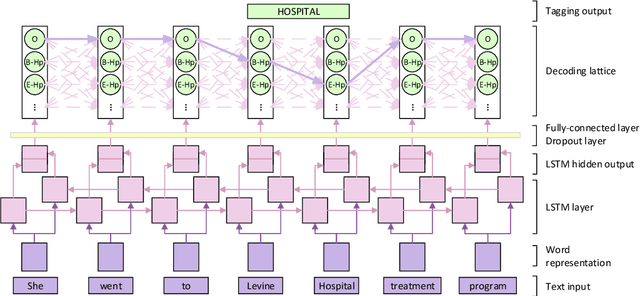
Abstract:The CEGS N-GRID 2016 Shared Task 1 in Clinical Natural Language Processing focuses on the de-identification of psychiatric evaluation records. This paper describes two participating systems of our team, based on conditional random fields (CRFs) and long short-term memory networks (LSTMs). A pre-processing module was introduced for sentence detection and tokenization before de-identification. For CRFs, manually extracted rich features were utilized to train the model. For LSTMs, a character-level bi-directional LSTM network was applied to represent tokens and classify tags for each token, following which a decoding layer was stacked to decode the most probable protected health information (PHI) terms. The LSTM-based system attained an i2b2 strict micro-F_1 measure of 89.86%, which was higher than that of the CRF-based system.
Building a comprehensive syntactic and semantic corpus of Chinese clinical texts
Nov 08, 2016
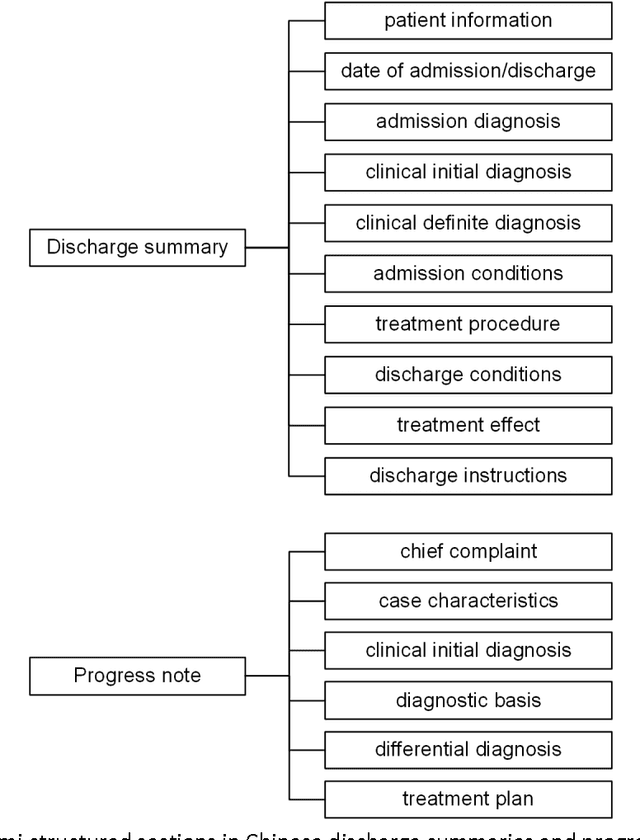
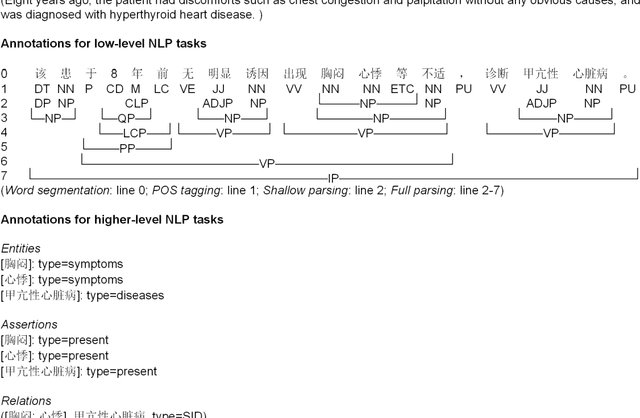

Abstract:Objective: To build a comprehensive corpus covering syntactic and semantic annotations of Chinese clinical texts with corresponding annotation guidelines and methods as well as to develop tools trained on the annotated corpus, which supplies baselines for research on Chinese texts in the clinical domain. Materials and methods: An iterative annotation method was proposed to train annotators and to develop annotation guidelines. Then, by using annotation quality assurance measures, a comprehensive corpus was built, containing annotations of part-of-speech (POS) tags, syntactic tags, entities, assertions, and relations. Inter-annotator agreement (IAA) was calculated to evaluate the annotation quality and a Chinese clinical text processing and information extraction system (CCTPIES) was developed based on our annotated corpus. Results: The syntactic corpus consists of 138 Chinese clinical documents with 47,424 tokens and 2553 full parsing trees, while the semantic corpus includes 992 documents that annotated 39,511 entities with their assertions and 7695 relations. IAA evaluation shows that this comprehensive corpus is of good quality, and the system modules are effective. Discussion: The annotated corpus makes a considerable contribution to natural language processing (NLP) research into Chinese texts in the clinical domain. However, this corpus has a number of limitations. Some additional types of clinical text should be introduced to improve corpus coverage and active learning methods should be utilized to promote annotation efficiency. Conclusions: In this study, several annotation guidelines and an annotation method for Chinese clinical texts were proposed, and a comprehensive corpus with its NLP modules were constructed, providing a foundation for further study of applying NLP techniques to Chinese texts in the clinical domain.
 Add to Chrome
Add to Chrome Add to Firefox
Add to Firefox Add to Edge
Add to Edge